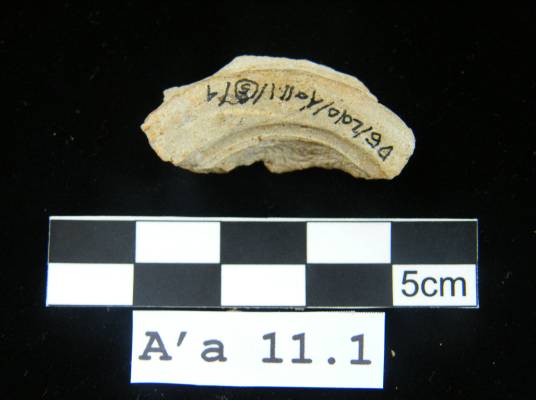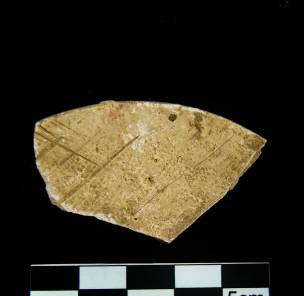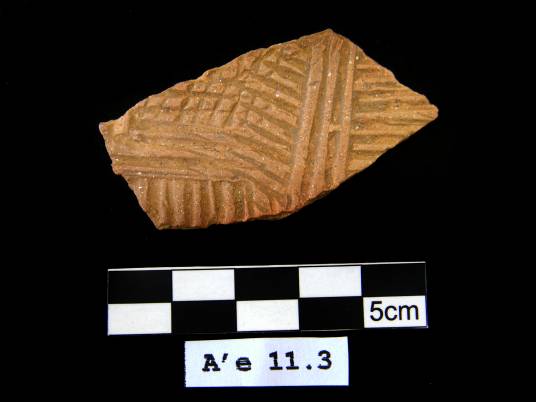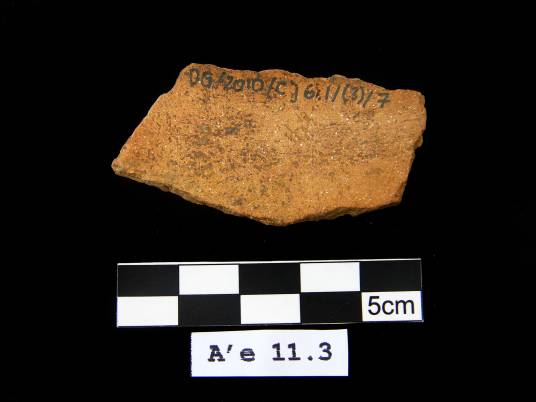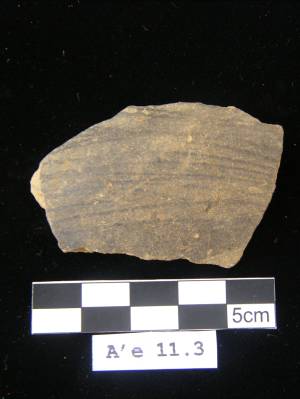Sector TP2 consisted of units TP2, TP2.1, and TP2.2. Unit TP2 measured 2x1 meter. See sketch map below.
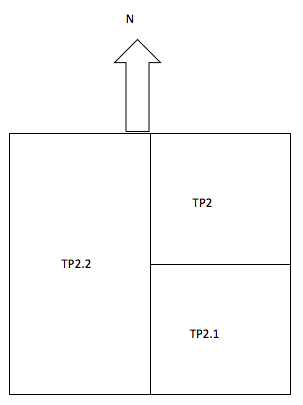
Sector TP2 was laid out west of unit TP1. Unit TP2 was also located on the bank next to a field which had been partially dug for soil to fill in the footpath leading to the Arjuna group. As in unit TP1, this location was excavated to confirm whether the surface there was at the level previous to the reclamation work, and whether earthenware or foreign ceramics might be contained in it.
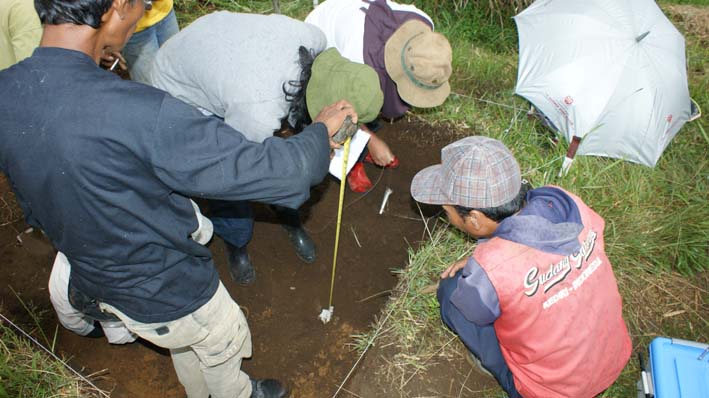

The first unit excavated in the sector was TP2. The surface, which sloped to the east, was overgrown with alang-alang grass. No finds were recovered in spits 1-2 (to a depth of 50 cm from SDP). In spit 3 (51-75 cm below SDP) 3 foreign ceramics and 21 local earthenware sherds were found, in a layer of black soil16-150 cm below SDP) which appeared at 65 cm below SDP. In spit 4, 76-100 cm below SDP, were found 2 fragments of foreign ceramics (83 cm below SDP) and 25 earthenware sherds. Soil in this spit was brown. In spit 5 (101-125 cm below SDP) were 4 four sherds of Chinese ceramics with blue dots. These sherds were found directly beneath a yellow soil layer. In spit 6 (126-150 cm below SDP) four sherds of Chinese ceramics were found in the upper portion of a yellow soil stratum. A group of temple stones was found at a depth of 100 cm below SDP.
Finds in Unit TP2
Dataset: Chinese Ceramics
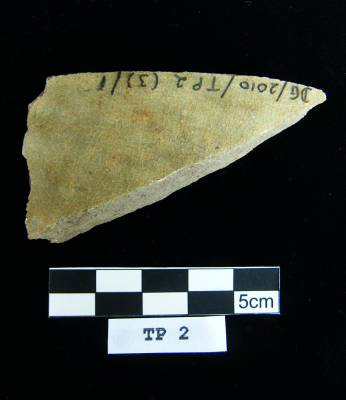
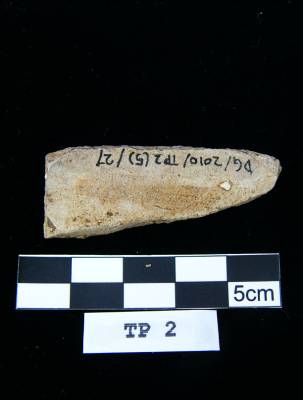
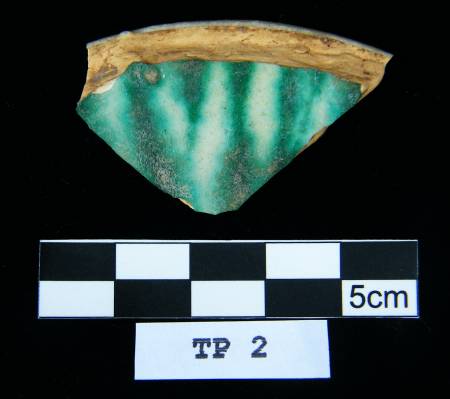
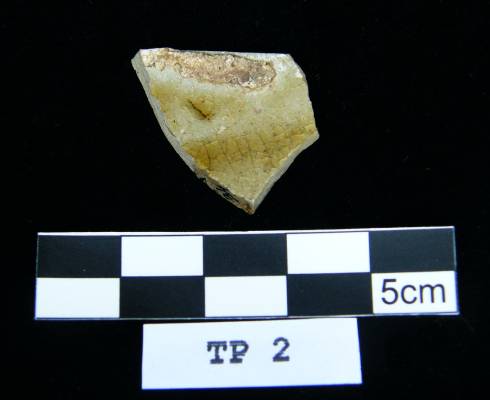
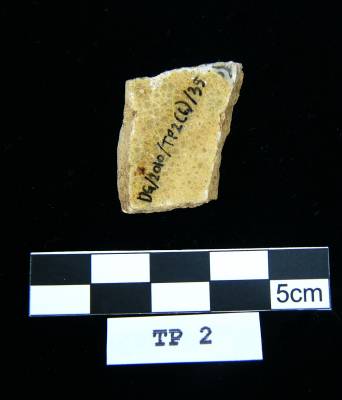
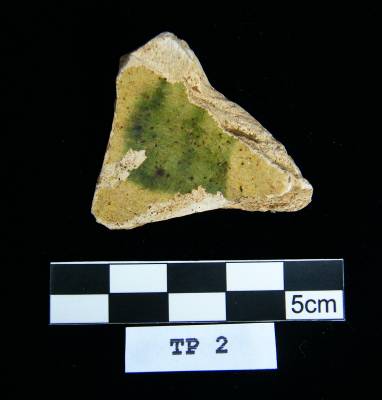
Dataset: Earthenware
Showing 0 of 0 total records in this dataset. See all.
UNIT TP2.1
Unit TP2.1 formed a southerly extension of unit TP2 (see sketch map). The unit was extended in this direction because the number of finds tended to increase in the south part of unit TP2. The surface of the unit was overgrown with grass and was lower at the northern side. Spit 1 was sterile. In spit 2 (26-50 cm below SDP) were found two stones, rectangular pieces of temples. In spit 3 (to a depth of 75 cm below SDP) most of the finds were earthenwares. Foreign ceramics were found at a depth of 95 cm from SDP. In spit 5 (up to 125 cm below SDP) more earthenware was found in yellow soil.
FINDS IN UNIT TP2.1
Dataset: Chinese (Ancient)
Showing 0 of 0 total records in this dataset. See all.
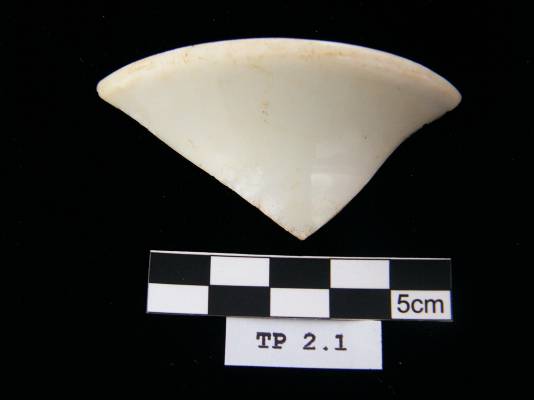
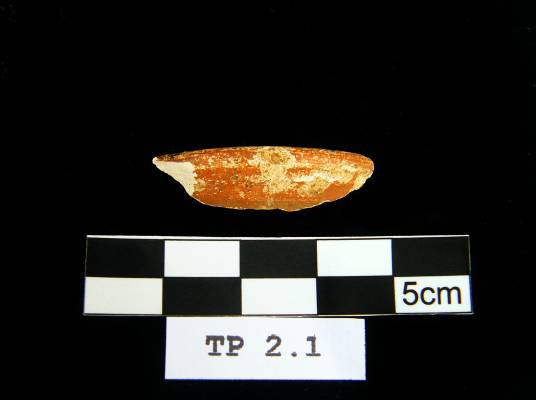
Dataset: EARTHENWARE [ALL HAVE PYRITE SAND TEMPER]
Showing 0 of 0 total records in this dataset. See all.
UNIT TP2.2
Unit TP2.2 was an extension of units TP2 and TP2.1, and measured 2X1m (see unit sketch map). The surface of the unit was overgrown with tall thick ilalang (Imperata cylindrica) grass. The ground surface was lower on the In spit 1 (0-25 cm below SDP) one body sherd of modern porcelain was found. Soil was mixed with grass roots. In spit 2 (25-50 cm below SDP) five earthenware sherds were found, plus five temple stones at the bottom of the spit. Spit 3 (50-75 cm below SDP) contained two fragments of glass (green and blue). In spit 4 (75-100 cm below SDP) finds included 6 sherds of earthenware, a small quantity of charcoal, and two sherds of foreign ceramic. Spit 5 (100-125 cm below SDP) yielded 5 sherds of Chinese ceramics and 3 earthenware sherds. At the bottom of spit 5 a soil change from dark brown to yellow was observed. Excavation was halted at the bottom of spit 5.
FINDS IN UNIT TP2.2
Dataset: Chinese Ceramics
Showing 0 of 0 total records in this dataset. See all.
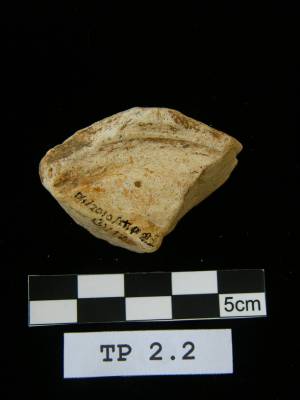
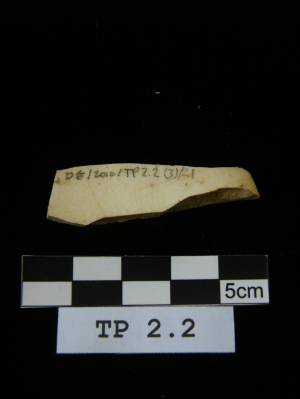
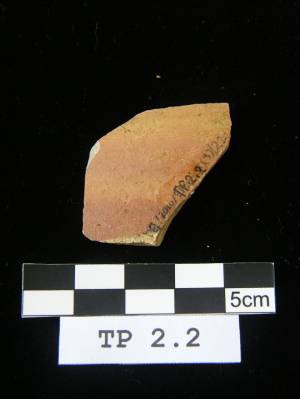
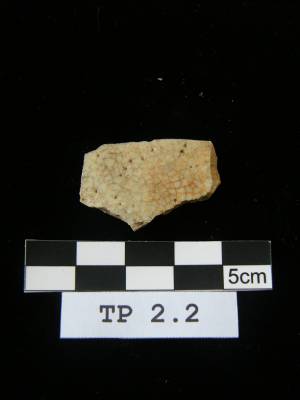
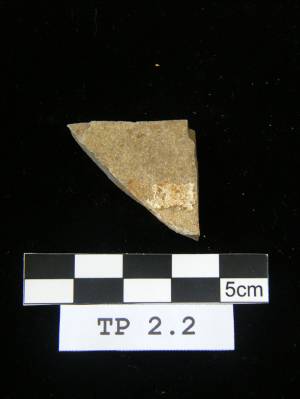
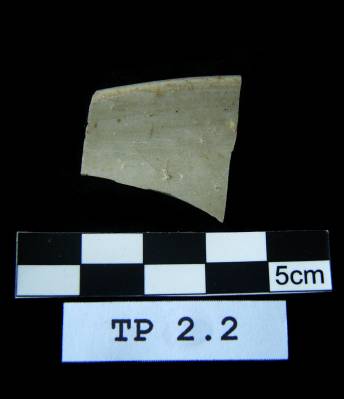
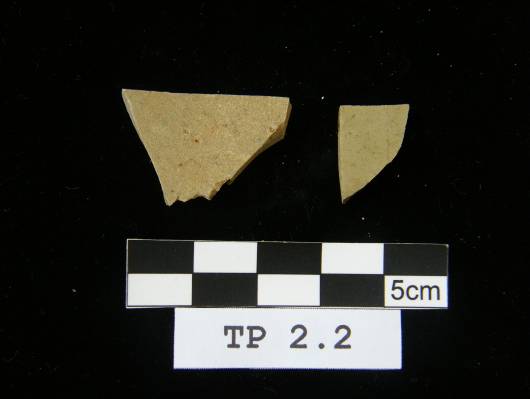
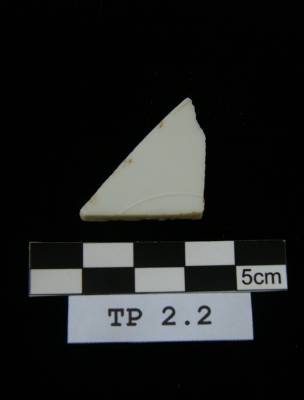
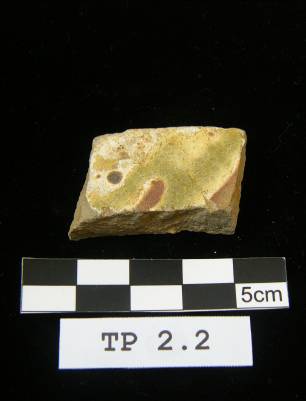
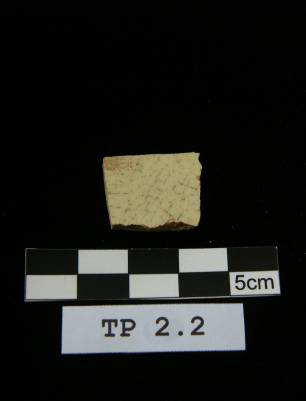
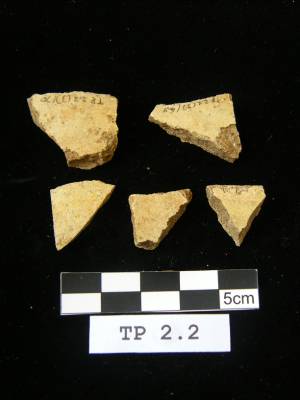
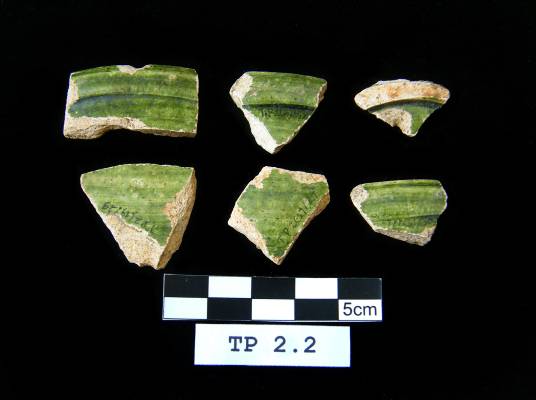
Dataset: GLASS
Showing 0 of 0 total records in this dataset. See all.
PHOTO: TP2.2 SPIT 3 GLASS SHARDS 35 AND 36
The glass shards are of particular interest since ancient glass has received little attention from Indonesian researchers.
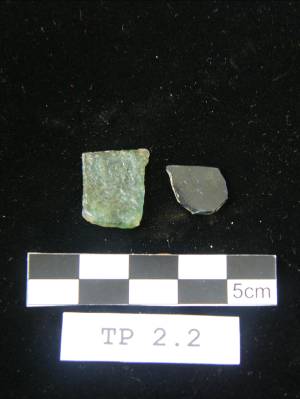
Dataset: EARTHENWARE
Showing 0 of 0 total records in this dataset. See all.


In general, the densest remains in TP2 were found between 100 and 125 cm below SDP.
In the area of the football field, excavation was also conducted on the footpath in addition to sectors TP1 and TP2. Units near the footpath were A’a10.8, A’a11.1, A’C11.3, and K’b32.4.
Unit A’a10.8
This unit measuring 2x2 m was excavated in 25-cm spits. The spot was chosen on the basis of Prof. Miksic’s recollection that the soil here was still undisturbed by soil mining for fill to construct the footpath to the Arjuna Complex, though local residents stated that the land in that area had been used to plant potatoes. Such recent usage would have disturbed the soil to a maximum depth of 50 cm. The excavation recovered temple stones, foreign ceramics, and earthenware to a depth of 120 cm below SDP.
Details of finds:
Dataset: Chinese Ceramics
Showing 0 of 0 total records in this dataset. See all.
Dataset: Earthenware
Showing 0 of 0 total records in this dataset. See all.
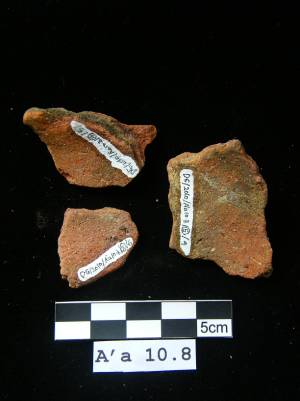
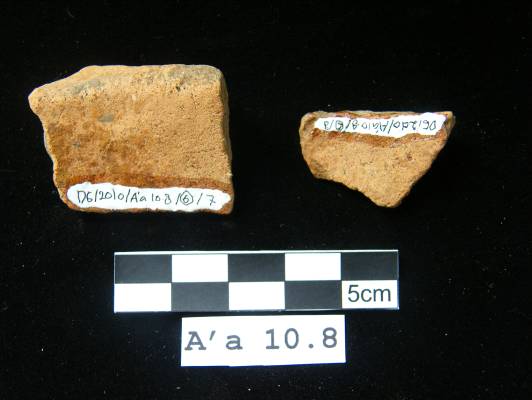
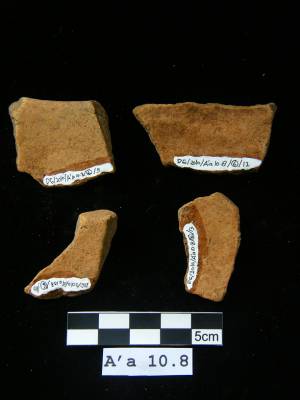
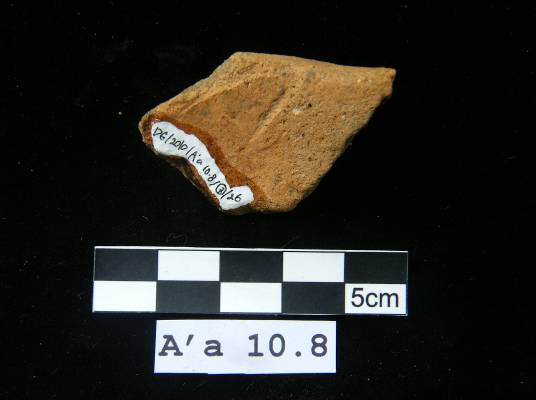
Unit A’a11.1
This unit measured 2x2m. Spits were 20 cm thick. The surface of the square before excavation was uneven; the east side was 71 cm lower than the west side. From the highest side, the unit was excavated to a depth of 180 cm below the secondary datum point. In addition to earthenware and stoneware, charcoal was found in spit 6 at a depth of Z=180 cm below DPS.
Finds in A’a11.1
Dataset: Chinese Ceramics (Ancient)
Showing 0 of 0 total records in this dataset. See all.
Dataset: Earthenware
Showing 0 of 0 total records in this dataset. See all.
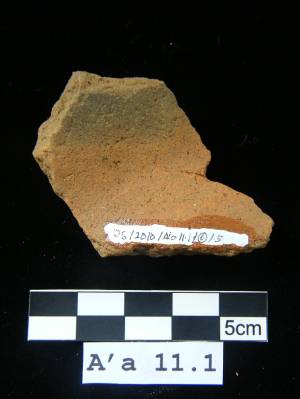

UNIT A’c11.3
The SDP of this unit was 2,086.995m above mean sea level. Its dimensions were 2x2m. The objective of the excavation in this location was to search for more foreign ceramics. The unit became sterile at the bottom of spit 6, so excavation was stopped. Most finds came from spit 4 and above. In addition to pottery, concentrations of charcoal were found in spits 2, 3, and 5, and a gacuk was found in spit 3. This find is significant, because gacuk had previously only been recorded found in large quantities at the sites of Trowulan and Singapore, which date from the 14th century. The gacuk were found in the same context as charcoal and porcelain with grayish-green glaze.
TABLES OF FINDS:
Dataset: Chinese Ceramics
Showing 0 of 0 total records in this dataset. See all.
![Photo 68 A’C11.3 Spit 2 No 9 [DSCF3573]](/sitereports/dieng/images/pdfimage-053.jpg)
![Photo 69 A’C11.3 Spit 2 No 19 [DSC3580]](/sitereports/dieng/images/pdfimage-054.jpg)
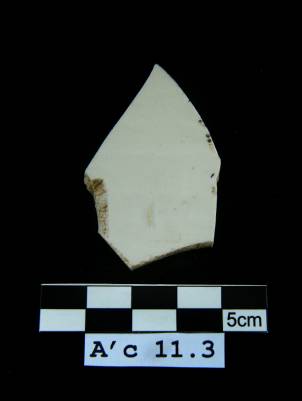
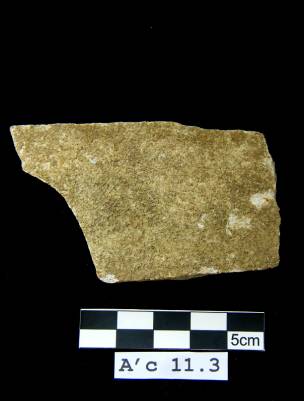
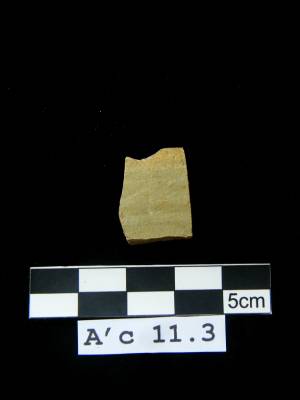
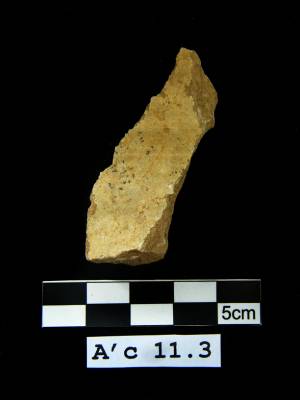
Dataset: EARTHENWARE
Showing 0 of 0 total records in this dataset. See all.

![Photo 77 A’c 11.3 spit 3 no 32 (<em>gacuk</em>) [Photo 3649]](/sitereports/dieng/images/pdfimage-062.jpg)
UNIT A’e 11.3
Unit A’e11.3 was located west of a group of stone ruins of a candi west of the football field which had never been studied by the BP3. Eight sherds of Chinese ceramics were found on the surface near the candi stones. Before excavation the ground surface was covered with rough grass. The unit measured 1x2m. The excavation was conducted by 25 cm spits to a depth of 175 below SDP. Potsherds were found to a depth of 150 cm below SDP. The last 25 cm spit was sterile.
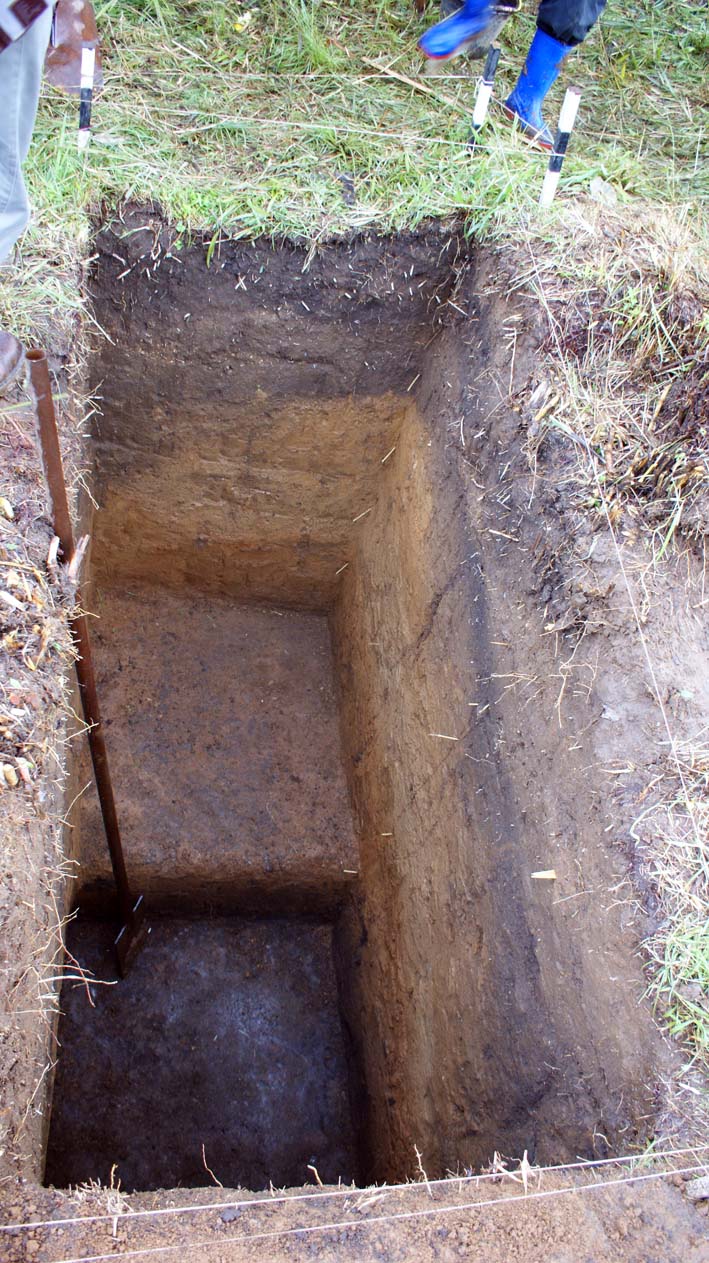
TABLES OF FINDS:
Dataset: Chinese Ceramics
Showing 0 of 0 total records in this dataset. See all.
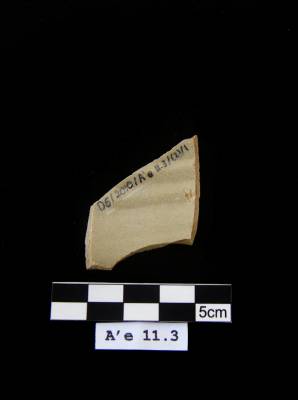
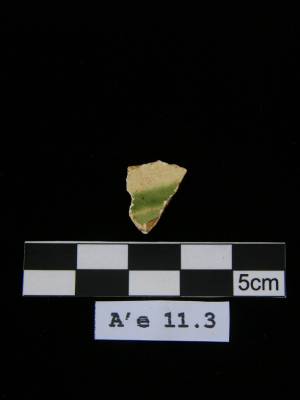
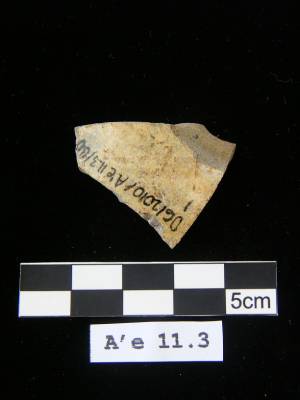
![Photo 82 A’e11.3 Spit 3 No 1 [DSCF3476]](/sitereports/dieng/images/pdfimage-068.jpg)
Dataset: EARTHENWARE
Showing 0 of 0 total records in this dataset. See all.
TOTALS OF RECONSTRUCTED PIECES
(Representing Minimum Number of Vessels of Each Shape)
MODERN: Cups, Stoneware/Porcelain
| K’f32.1 | 7 | |||
| K’b32.4 | 6 | 3 | 2 | 1 |
| Zh10.9 | 14 | 3 | 2 | 1 |
| Total | 27 | 6 | 4 | 2 |
Earthenware (Recent):
| Excavation Unit | Cobek | Frying Pan | Stove Base |
|---|---|---|---|
| K’b32.4 | 1 | 1 | 1 |
| Total | 1 | 1 | 1 |
Ancient Vessels by Shape:
| Excavation Unit | Jar | Bowl | Kendi/Ewer | Periuk/Cooking Pot | ||||
|---|---|---|---|---|---|---|---|---|
| Stoneware/Porcelain | Earthenware | Stoneware/Porcelain | Earthenware | Stoneware/Porcelain | Earthenware | Stoneware/Porcelain | Earthenware | |
| Zh10.9 | 1 | 1 | 1 | 4 | 2 | |||
| C’j6.1 | 1 | |||||||
| TP1 | 2 | 2 | 3 | |||||
| TP1.1 | 5 | 1 | 1 | |||||
| TP1.2 | 3 | 1 | 5 | 5 | 1 | |||
| TP1.3 | 2 | 2 | 3 | 3 | ||||
| TP1.4 | 3 | 2 | 2 | |||||
| TP1.5 | 2 | 2 | 2 | |||||
| TP2 | 3 | 4 | 5 | 3 | 1 | |||
| TP2.1 | 3 | 8 | ||||||
| TP2.2 | 1 | 2 | 13 | 5 | 1 | |||
| A’a11.1 | 1 | |||||||
| A’c11.3 | 4 | 1 | 5 | 6 | 2 | 4 | ||
| A’e11.3 | 4 | 2 | 1 | 2 | ||||
| Total | 24 | 21 | 43 | 48 | 4 | 11 | 0 | 1 |
| Excavation Unit | Plate | Frying Pan | Pengaron/Stove | Large Jar | ||||
|---|---|---|---|---|---|---|---|---|
| Stoneware/Porcelain | Earthenware | Stoneware/Porcelain | Earthenware | Stoneware/Porcelain | Earthenware | Stoneware/Porcelain | Earthenware | |
| Cj’6.1 | 2 | |||||||
| TP1 | 1 | 2 | 1 | |||||
| TP1.2 | 7 | |||||||
| TP1.3 | 2 | 1 | 1 | |||||
| TP1.4 | 1 | |||||||
| TP2 | 1 | 4 | ||||||
| TP2.1 | 1 | 3 | ||||||
| TP2.2 | 6 | 1 | ||||||
| A’a10.8 | 1 | 2 | ||||||
| A’a11.1 | 1 | 1 | ||||||
| A’c11.3 | 1 | 1 | 4 | 1 | ||||
| A’e11.3 | 2 | 1 | 1 | |||||
| Total | 10 | 2 | 34 | 3 | 1 | |||
| Excavation Unit | Covered Box | Drinking Vessel | Vase | Jarlet | ||||
|---|---|---|---|---|---|---|---|---|
| Stoneware Porcelain | Earthen Ware | Stoneware Porcelain | Earthen Ware | Earthen ware | ||||
| TP2 | 1 | 1 | 1 | |||||
| TP2.1 | 1 | |||||||
| TP2.2 | 1 | |||||||
| Total | 1 | 1 | 1 | 1 | 2 | |||
| Excavation Unit | Genuk (large squat jar of earthenware) |
|---|---|
| TP2.1 | 1 |
| A/e11.3 | 1 |
| Total | 2 |

